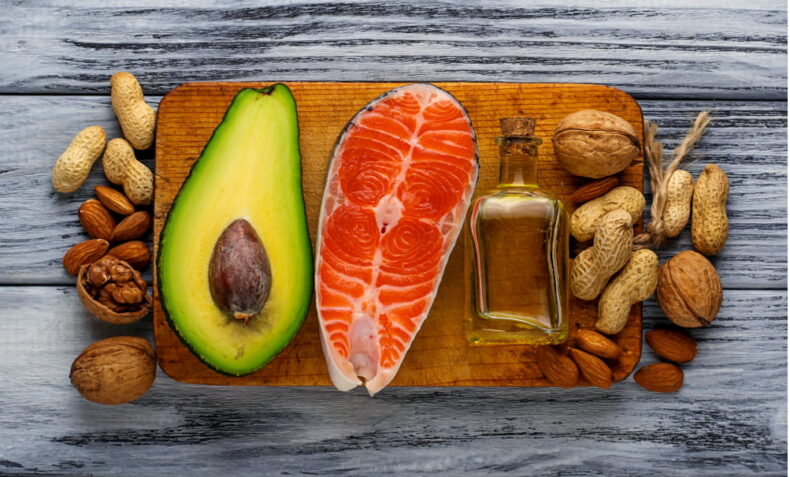Favourite Gluten-Free Items Available at Spud May National Celiac Awareness Month, but every day Spud…
We’ve all been told about the wonders of omega-3 and omega-6 fatty acids. After all, they bear the hefty title of “essential fatty acids”. These fatty acids help improve our heart health, cognitive function, nervous system, and a whole lot more. Simply put, we need them to survive. But like all things good for you, is there a limit? Exactly how much is too much? Do we need one more than the other?
Why are they essential?
Only two fatty acids are essential to humans, omega-3 and omega-6. They come with unparalleled health benefits, and they are essential in that we require them in order to stay healthy.
When we read about omega-3 and omega-6, many health articles often cite the most significant food sources. This is because our bodies can’t produce them, which means our only way of obtaining nutrients is through our diet.
What are the differences between omega-3 and omega-6 fatty acids?
Exactly how amazing are omega-3 fatty acids? The prestigious list of benefits include reducing the risk of heart disease, diabetes, arthritis, osteoporosis, autoimmune disease, anxiety, depression, bipolar disorder, and cancers.
But not all omega-3 fatty acids are the same. These healthy fats come in many forms, and the three most common types are EPA (eicosapentaenoic acid), DHA (docosahexaenoic acid), and ALA (alpha-linolenic acid). The former two are long-chain fatty acids, and the latter is a short-chain fatty acid. The length of a chain defines the saturation and melting point of the fatty acid. As the length increases, the melting point also increases.
Omega-6 fatty acids are no chump change either, as they provide health benefits that include the reproductive system, skin growth, muscle function, bone strength, and brain function.
What is the healthy ratio between the two essential fatty acids?
The twist however, is that omega-6 fatty acids can cause inflammation, which can lead to all sorts of issues for every part of your body. In order to reap the benefits of omega-6 fatty acids, we need enough omega-3 to offset the inflammatory nature of the former. This means that maintaining a healthy ratio between the two is crucial.
While the “right” ratio varies amongst studies and research, anthropological evidence reveals that the evolution of the human diet has always revolved around a one-to-one ratio, yet the current Western diet is a tremendously lopsided 16:1, favouring omega-6 fatty acids.
But obtaining the right ratio should be easy, right?
Not quite. The issue is that our modern-day diet is flooded with omega-6s, particularly in the oils that we use. Vegetable oils including canola, corn, sesame, peanut, safflower, and walnut all contain omega-6s and little to none omega-3s. Even foods like sardines, which you would expect to have omega-3s–and they absolutely do–are still higher in omega-6s.
Which foods have a high omega-3-to-omega-6-fatty-acids ratio?
The simplest way is to eat more foods that are not only high in omega-3s, but also higher in ratio.
Seafood is generally the obvious choice, with crabs, mussels, scallops, oysters, octopus, squid, and clams all boasting high ratios favouring omega-3s. Other fish such as halibut, salmon, tuna, mackerel, sea bass, and cod are also great sources.
If you’re more of a plant-based eater, don’t panic yet. Although your favourite nuts like pecans and walnuts, as well as your favourite olive oil all have tremendously lopsided ratios, there are some nuts and seeds that can help. Mung beans, for example, boast a 15:1 ratio favouring omega-3s. Navy beans and kidney beans are next on the list, serving as excellent replacements. Flaxseeds are also one of the healthy superfoods that can help you balance out.
And although vegetables are not great sources of either fatty acids, most dark leafy greens and other vegetables like cauliflower, in particular, do help with the ratio, as they generally contain no omega-6s.
The consumption of essential fatty acids can be difficult to track, but making an effort in achieving a better balance between the two can do wonders in the long run. And hey–when in doubt, pop a fish oil supplement pill for good measure.
Are you getting a good balance between omega-3 and omega-6 fatty acids? If you have any tips and favourite foods or recipes that help with the lopsided ratio between the two fatty acids, we would love to know!




